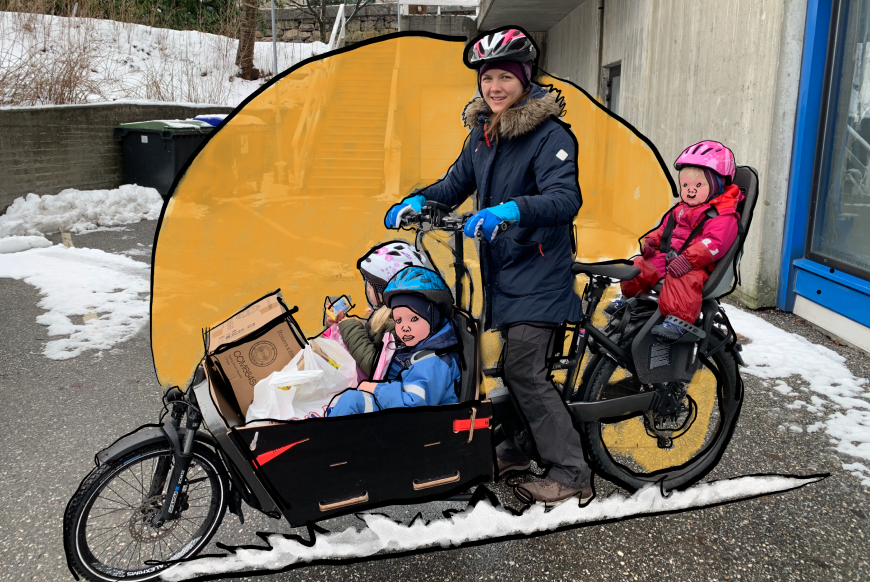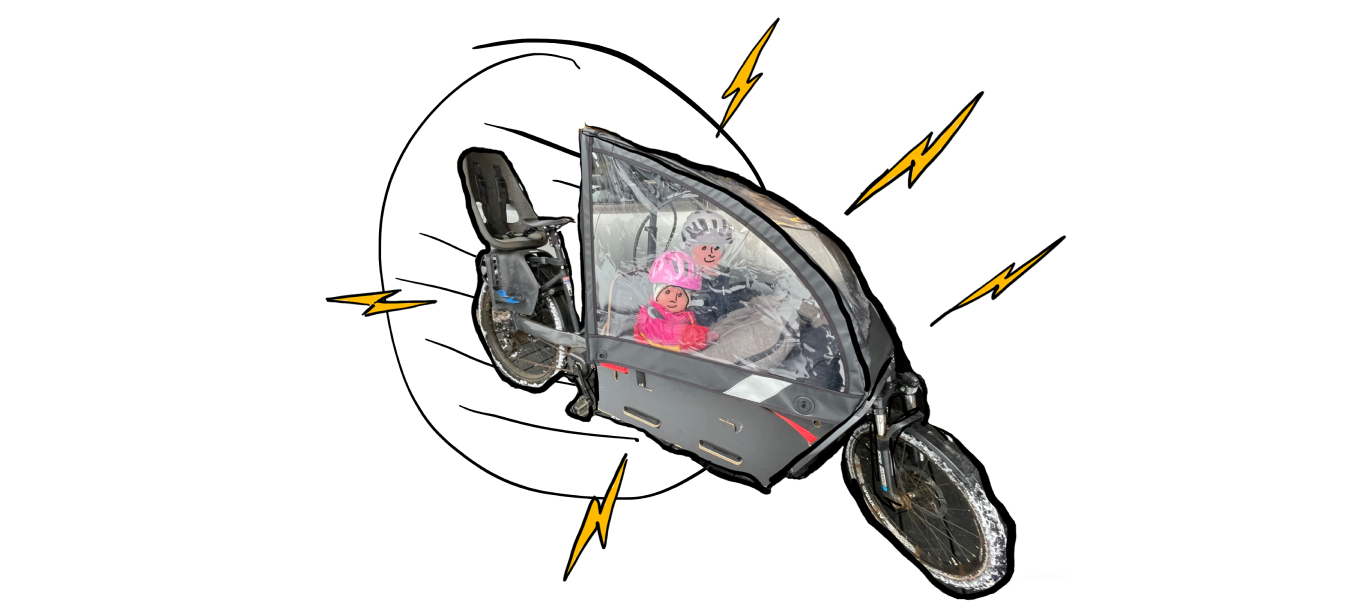Why selling our car and buying a cargo bike is the best investment we've ever done
Three years ago, we sold our car and bought two e-bikes as a replacement. Purchasing a cargo bike is by far one of the best choices we've made over the last few years.

Why?
The idea of getting rid of our car came when we had to pay for changing rusty brake pads. We were not using our car enough. The car was a Volvo V40 we bought to commute between Bergen and Førde because of work, but when we finally moved to Bergen again, we only used the car for the occasional weekend getaway.
The math
As you expect from an analytical couple, we calculated our expenses from the car and our alternatives. The conclusion? We didn’t need a car – we didn’t use it enough to defend the costs. We quickly calculated that our transport needs were well covered by having two bikes combined with the local car collective when we needed to go for longer rides.
Our situation
- We’re a family of four - two parents and two kids (Now 3 and 1 year)
- We live close to both our parents
- We live close to the kindergarten (15 min walk ~ 5 min bike ride)
- None of us has ever driven a car to work; we always commuted by bus (~30 min), biked (~15 min for me, ~ 25 min for my wife), or walked.
- We live close to grocery stores (~10 min walk) and get our food delivered at home once a week
- We don’t know a lot about cars and can’t fix them ourselves
The bikes
After a lot of research, we bought two electric bikes. One large transport bike, a Riese & Muller Packster 60, and a cheaper regular e-bike, Kalkhoff Endeavour. Both with extra studded tires for the winter as well as a child seat. I’ll admit it felt a bit stupid when almost all the money from our old car got used on two new bikes, but it has been totally worth it! We have since upgraded the Kalkhoff to another transport bike: A Riese & Muller Multicharger. This is a long-tail – a regular cycle with an extended luggage tray with room for both the kids. This way, we can transport two kids on both our bikes.

Happiness
The most surprising thing about this choice is the amount of happiness it has brought us. All the perfect moments of our family rolling around. Talking about what we see. Worry-free! No sudden car expenses. We’re experiencing more freedom even though we can’t travel that far on short notice. Our kids are also much happier. A one-hour bike ride is no problem. A one-hour car ride is hell on earth.
I’ll be the first to admit that it’s not always the most fun experience getting out when it’s below zero and sleet out. But when it’s your only option, it’s actually not that bad. You just have to dress for the weather. As my wife said when we were bicycling home from a mountain trip in the snow: “I’ll admit that I had preferred jumping into a warm car now, but then I thought that car-people don’t know what they are missing.”
Car collective
When our bikes don’t cut it, we use the local car collective (or parents cars 😘). The downside with car collectives is that you have to plan a lot ahead and that it on paper seems very expensive to pay 2 000 NOK for having a car for one weekend. But if you crunch the numbers and plan ahead, it’s better for both your wallet and the environment. After all, the typical car is parked 95% of the time! It’s also a more carefree experience. If something is wrong with the vehicle during your trip, you have to report it in the app. After that, it’s not your problem anymore. No more thoughts about service, tire change, EU-control, insurance, or resale value.
What is the actual cost?
Transportation is costly, no matter if you are driving, biking, or commuting. But owning a car has many unseen expenses that are easy to forget: tolls, insurance, scheduled and unexpected services, and the largest one: value loss. Getting all our transport related bills from two providers, the car collective and the bike repair shop, it’s easier to see our actual cost of transportation than it would have been if we owned a car.
Last year we used ~ 19 000 NOK on all expenses related to cars - everything from car collective, parking, toll rings to rent. We used 4 300 NOK on service and new parts for our two electric bikes. If we add the value loss on electric bikes, we’ve used ~ NOK 43 000 on transportation over the last year. This includes a two-week car holiday in Norway and multiple weekend trips to our parents’ cabins.
Value loss
For well-known market brands, an e-bike depreciation rate is evenly divided over a five to seven year period. A rule of thumb is that the value loss on cargo bikes is 10 000 NOK a year.
Comparing expenses, a Nissan Leaf would cost us NOK 70 000,- for a year on iMove included service and insurance, but without toll and fuel expenses. With that alternative, we would still need to bike to work or have a public transport ticket costing a total of 15 000 NOK a year for the both of us. (Just the parking costs of using a car to work would be more than the expenses we had for transportation last year.)
This of course, depends on your needs for getting around. But you certainly don’t have to live in the city center to not own a car.
Environment
The choice to not own a car was mainly based on logic – we didn’t use our car enough to justify the expenses. But also from an environmental point of view, it just makes sense: Cycling is ten times more important than electric cars for reaching net-zero cities, and it’s just a more fun (and healthy) way to travel. I prefer cities that prioritize cyclists and walkers. They are more welcoming! Bergen has never been better than when we arranged the 2017 UCI Road World Championships, and the city center was closed off for cars.

Going forward
We might buy a car down the line or subscribe for a car service for a few months a year if we see the need, but for the moment, we’re pleased with our current transportation solution.